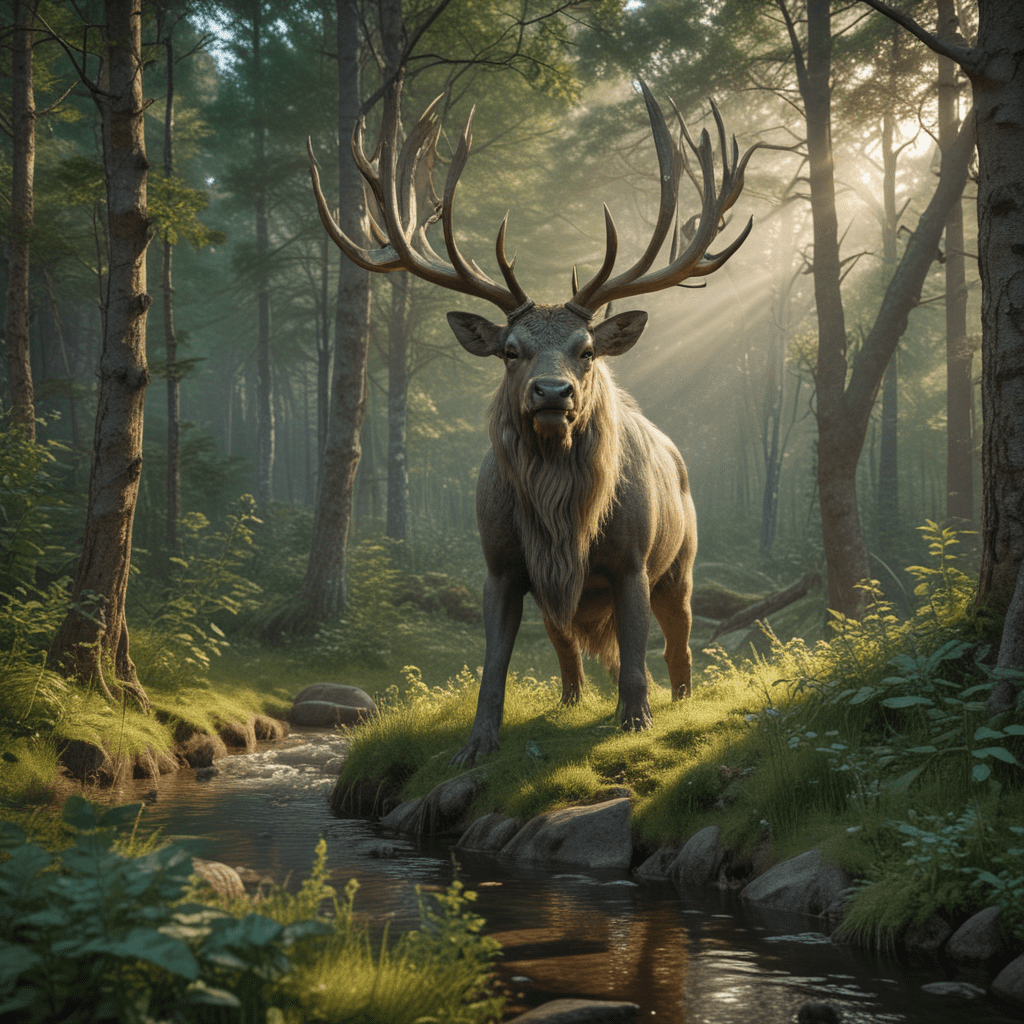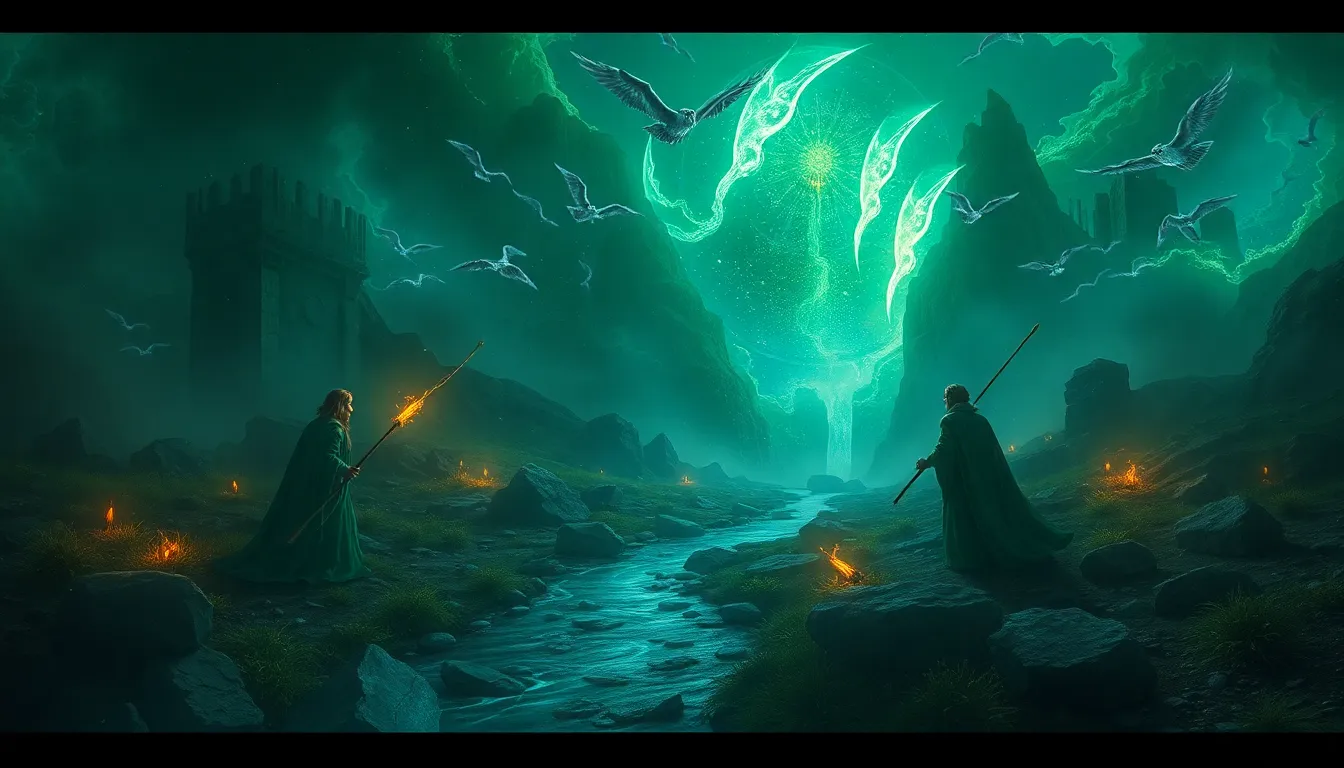The Connection Between Finnish Mythology and Nature
1. Ancient Beliefs and Animism
Finnish mythology has deep roots in the country's natural environment. Ancient Finnish beliefs were deeply animistic, with a belief that all things, from trees to rocks to animals, possessed a spirit. This worldview fostered a profound respect and reverence for the natural world, which was seen as a sacred and living entity.
2. The Significance of Forests and Water
Forests and water bodies play central roles in Finnish mythology. The dense forests were seen as places of mystery and enchantment, home to supernatural beings such as trolls and fairies. Lakes and rivers were considered sacred, believed to be connected to the underworld and often associated with important rituals and ceremonies.
3. Väinämöinen: The God of Nature
Väinämöinen is the central figure in Finnish mythology. As the god of nature, he possessed vast knowledge of magic and healing and was believed to have created the world through his singing. Väinämöinen's deep connection to the natural world is reflected in his ability to control the elements, transform into animals, and traverse the boundaries between realms.
4. Ilmarinen: The Forger of the Universe
Ilmarinen is the blacksmith god of Finnish mythology. His forge was believed to be located at the bottom of the sea, and it was said that he forged the universe and all its celestial bodies. Ilmarinen's relationship with nature is evident in his crafting of the Sampo, a magical mill that produced wealth and prosperity.
5. Louhi: The Evil Mistress of the North
Louhi is the wicked sorceress who rules over the remote northern regions of Finland. Associated with cold, darkness, and chaos, Louhi represents the untamed and unpredictable aspects of nature. Her dwelling is described as an ominous castle made of ice and stone, surrounded by treacherous bogs and forests.
6. The Creation Myth and the Origin of Nature
The Finnish creation myth describes the birth of the world from the primordial void. Väinämöinen emerges from the cosmic egg and dives into the sea, where he separates the waters from the land. Forests and mountains rise, and the sun, moon, and stars take their places in the sky. This myth emphasizes the interconnectedness of nature and the role of Väinämöinen as the architect of the world.
7. Nature as a Source of Wisdom and Magic
Nature in Finnish mythology is not merely a backdrop but an active participant in human affairs. Forests are said to hold ancient secrets, and rivers possess the power to heal and purify. Animals are often seen as messengers from the gods or embodiments of supernatural forces. This belief in nature's wisdom and magic has influenced Finnish folklore, where characters often seek guidance from the natural world.
8. The Role of Animals in Finnish Folklore
Animals play significant roles in Finnish folklore. The bear is revered as a symbol of strength and cunning, while the fox represents trickery and wisdom. Birds are often associated with communication and the passage of time. The moose, with its large size and gentle nature, is seen as a protector of the forest. These animals are not just mythical creatures but integral parts of the Finnish mythology, reflecting the deep connection between humans and the natural world.
9. The Influence of Nature on Finnish Identity
The close relationship between Finnish mythology and nature has shaped Finnish identity. The country's vast forests, pristine lakes, and rugged landscapes have fostered a deep appreciation for the environment. Finns value outdoor activities, such as hiking, fishing, and berry picking, which connect them to their cultural heritage and the natural world.
10. Modern Interpretations and the Preservation of Nature
Modern interpretations of Finnish mythology often focus on the importance of preserving nature. Environmental activists and artists draw inspiration from the myths and legends to raise awareness about ecological issues. The Sampo, once a symbol of wealth and prosperity, has been reinterpreted as a metaphor for the delicate balance of the ecosystem. These modern interpretations reflect the enduring connection between Finnish mythology and the country's natural heritage.
FAQs
Q: What is the main theme of Finnish mythology?
A: The connection between nature and humanity is a central theme in Finnish mythology.Q: Who is the most important god in Finnish mythology?
A: Väinämöinen is the chief god of nature and wisdom.Q: What role do animals play in Finnish folklore?
A: Animals are often seen as messengers from the gods or embodiments of supernatural forces.
Q: How has Finnish mythology influenced Finnish culture?
A: Finnish mythology has fostered a deep appreciation for the environment and a strong connection to nature.Q: What is the significance of the Sampo in Finnish mythology?
A: The Sampo is a magical artifact that represents the delicate balance of the ecosystem.


